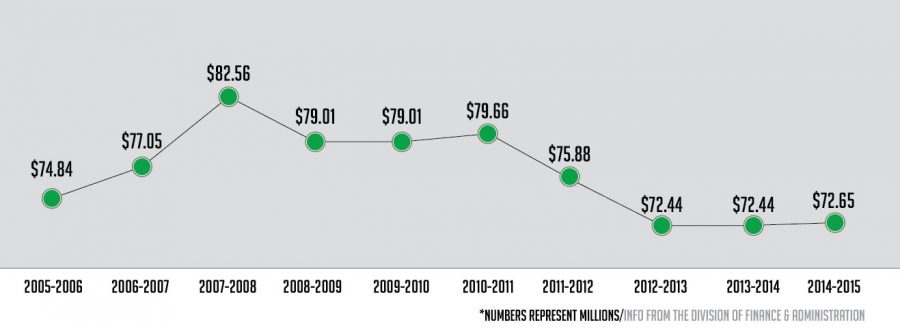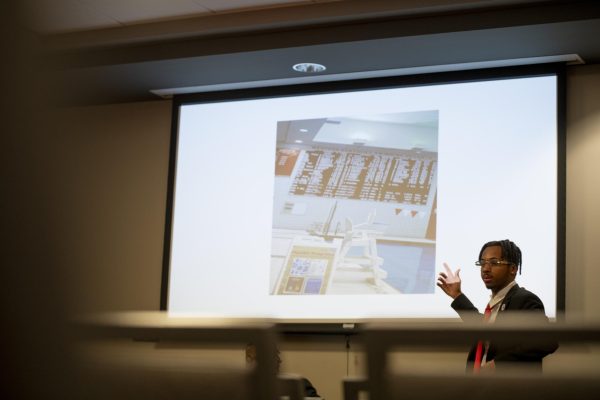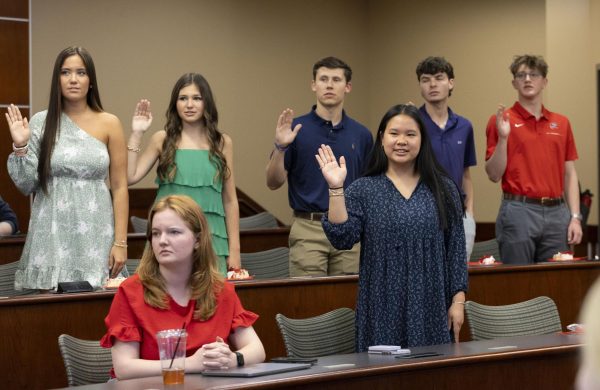State experiences revenue growth, officials to monitor budget
January 27, 2015
The state experienced revenue growth this year, which university officials hope will stabilize the budget.
Ann Mead, senior vice president for Finance and Administration, said the budget experienced a 3.6 percent growth over the previous year and a 3.5 percent increase over the past six months.
Mead said the Office of the State Budget Director released data that indicated strong income growth in November, but a slight decline in December.
She said the state finished the past six months of the fiscal year strong in terms of the budget projection.
“That’s good news that makes me feel much more comfortable that we won’t be hit with a mid-year budget cut,” she said. “Those are hard to deal with given the timing and your limited choices for how to make cuts.”
The revenue will be monitored each month as the state budget office sends out new numbers, Mead said.
President Gary Ransdell said at the Board of Regents meeting on Friday that he felt pleased with the current state budget.
“I hope we don’t get word of a budget cut,” Ransdell said. “It would be a serious matter for us to deal with a state budget cut going in to the second year of the biennium.”
Mead said one of the most important sources of funds for university operations are state appropriations.
WKU received $72.65 million for 2014-15, a $224,200 increase from last year, according to fiscal reports.
“We feel reasonably comfortable that it is stable for the current fiscal year, and as the president indicated, there is no increase next year,” Mead said.
She said the second most important source of funds is tuition, which she will assess with revenue at the end of March when she will construct the fiscal year 2016 operating budget.
Tuition increased about 5 percent last year, and it will increase about 3 percent next year. The increases served to balance the nearly $2 million lost after the state’s last legislative session.
Mead said the largest source of tuition revenue comes from undergraduate in-state students.
The university implemented a 1 percent faculty and staff salary raise this year, but Mead said it’s too early to tell whether the budget will permit another increase next year.
“The president continues to be concerned about our inability to have a reasonable compensation increase,” Mead said. “We’ll assess how much revenue a 3 percent tuition increase will generate and we’ll see what out fixed cost increases are, and then talk about what we can do in terms of compensation.”
Mead said Gordon Emslie, provost and vice president for Academic Affairs, is working toward a faculty market increase, in which he would align faculty salaries more closely with other universities that serve as benchmark institutions.
“I believe he’s been pretty upfront with faculty that it’s a high priority for him,” Mead said.
Emslie was approached for this story, but declined to comment.
Editor’s note: Previous versions of this story mislabeled the revenue growth as that of the university’s. The growth experienced was at the state level, which university officials hope will mean no financial cuts will come from the state level.

























